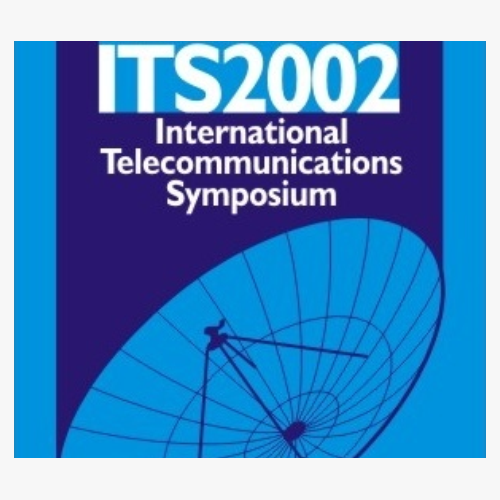
2002 International Telecommunications Symposium

Distance Metrics in the Internet
Bradley Huffaker, Marina Fomenkov, Daniel J. Plummer, David Moore, K Claffy
DOI: 10.14209/its.2002.603
Keywords:
Abstract
"We consider and compare four Internet distance metrics and analyze the predictive power of these metrics in selecting, from a given source, the lowest latency destination from among a candidate set. The four metrics are: IP path length; autonomous system (AS) path length; great circle geographic distance; and previously measured round trip time (RTT). We describe general properties of these four metrics and, using an unprecedented volume of real Internet macroscopic topology and RTT data, compare their correlation with actual RTT to the destination. The new methodology we propose for testing different metrics is suitable for evaluating new distance estimation techniques as they become available."Download

HTTP Traffic Modeling: Development and Application
Kleber V. Cardoso, José F. de Rezende
DOI: 10.14209/its.2002.609
Keywords:
Abstract
"This paper presents a new HTTP traffic model based on the aggregation concept. The model development, evaluation and application are shown. In addition to the basic HTTP traffic characteristics, the traffic model has an easy and accurate load control. Some examples are provided to present the traffic model usage."Download

An Optimized FXLMS based Algorithm for Application in Nonlinear Environments
Márcio Holsbach Costa, José Carlos Moreira Bermudez
DOI: 10.14209/its.2002.615
Keywords:
Abstract
"This work presents a new algorithm based on the Minimum Output Variance Least Mean Square Estimator when the influence of the secondary path can not be neglected and its output is constrained by a saturation nonlinearity. This situation is typical in several adaptive modeling and control systems where the associated hardware and transducers have a finite power handling capability. Analytical expressions are obtained for the behavior of the mean weight vector and for the mean square error for Gaussian inputs and slow learning. The optimum penalty factor is determined. The new algorithm provides an unbiased solution to the associated nonlinear mean square estimation problem for small estimation errors of the secondary path and degree of nonlinearity. Monte Carlo simulations show excellent agreement with the predictions of the theoretical model."Download
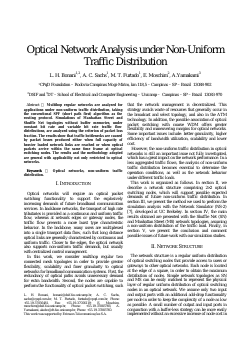
Optical network analysis under non-uniform traffic distribution
L. H. Bonani, A. C. Sachs, M. T. Furtado, E. Moschim, A.Yamakami
DOI: 10.14209/its.2002.621
Keywords: Optical networks non-uniform traffic distribution
Abstract
"Multihop regular networks are analyzed for applications under non-uniform traffic distribution, taking the conventional SPF (short path first) algorithm as the routing protocol. Simulations of Manhattan Street and Shuffle Net topologies without buffer memories, under constant bit rate and variable bit rate traffic flow distributions, are analyzed using the criterion of packet loss fraction. The results show that traffic bottlenecks are caused by packet losses produced either when full capacity of heavier loaded network links are reached or when optical packets arrive within the same time frame at optical switching nodes. The results and the methodology adopted are general with applicability not only restricted to optical networks."Download

Modelling Internet Paths Through a Minimum RTT Delay Analysis
Manoel Eduardo Mascarenhas da V. Alves, Sergey Nesterov, Reginald P Coutts
DOI: 10.14209/its.2002.627
Keywords:
Abstract
"This paper describes an experimental methodology for previewing path characteristics of interconnecting networks between two given sites on the Internet. The methodology is based on the analysis of Traceroute path samples collected in a regular time basis through a period of time. Paths are classified on either typical paths or minimum typical paths in terms of Traceroute parameters such as RTT, IP/DNS addresses and total number of echo-replies per node. Such a classification is used with a Client-Server Internet connectivity model and a minimum RTT delay model for previewing path characteristics."Download
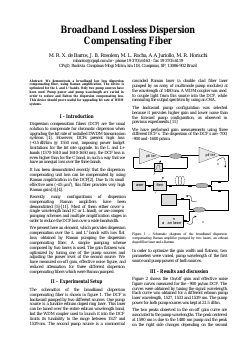
Broadband Lossless Dispersion Compensating Fiber
M. R. X. de Barros, J. B. Rosolem, M. L. Rocha, A A Juriollo, M. R. Horiuchi
DOI: 10.14209/its.2002.634
Keywords:
Abstract
"We demonstrate a broadband low loss dispersion compensating fiber, using Raman amplification. The device is optimized for the L and L+ bands. Only two pump sources have been used. Pump power and pump wavelength are varied in order to reduce and flatten the dispersion compensating loss. This device should prove useful for upgrading bit rate of WDM systems."Download

Impact of Fiber Nonlinear Effects on 10 Gb/s WDM Systems over 600 km of SMF and NZDS
Alberto Paradisi, Sandro M. Rossi, Miriam R. X. de Barros
DOI: 10.14209/its.2002.637
Keywords:
Abstract
"We carry out numerical simulations to compare the impact of the fiber nonlinear effects on transmission of 40 and 80 WDM channels modulated at 10 Gb/s, for three different fiber types, standard single mode fiber, large effective area NZDSF, and reduced dispersion slope NZDSF. By comparing the results with single channel transmission, we explain the contribution of the main nonlinear effects to the power penalties obtained."Download
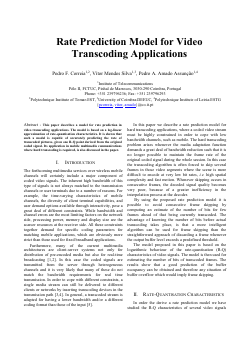
Rate Prediction Model for Video Transcoding Applications
Pedro F. Correia, Vítor Mendes Silva, Pedro A. Amado Assunção
DOI: 10.14209/its.2002.640
Keywords:
Abstract
"This paper describes a model for rate prediction in video transcoding applications. The model is based on a log-linear approximation of rate-quantisation characteristics. It is shown that such a model is capable of accurately predicting the rate of transcoded pictures, given one R-Q point derived from the original coded signal. Its application in mobile multimedia communications where hard transcoding is required, is also discussed in the paper."Download
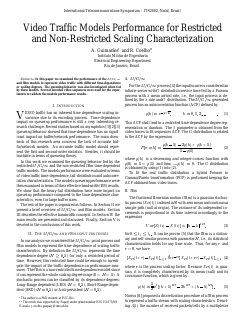
Video Traffic Models Performance for Restricted and Non-Restricted Scaling Characterization
A. Guimaries, R. Coelho
DOI: 10.14209/its.2002.645
Keywords:
Abstract
"In this paper we examined the performance of the M/G/infty and fBm models to represent video traffic with different time-dependence or scaling degrees. The queueing behavior was also investigated when fed by these models. Several encoded video sequences were used for the experiments to validate the models performance results."Download
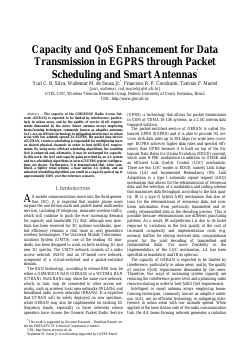
Capacity and QoS Enhancement for Data Transmission in EGPRS through Packet Scheduling and Smart Antennas
Yuri C. B. Silva, Waltemar M. de Sousa Jr., Francisco R. P. Cavalcanti, Tarcisio F. Maciel
DOI: 10.14209/its.2002.650
Keywords:
Abstract
"The capacity of the GSM/EDGE Radio Access Network (GERAN) is expected to be limited by interference, particularly in urban areas, and by the quality of service (QoS) requirements demanded by the users. Smart antenna arrays employing beam-forming techniques, commonly known as adaptive antennas (AA), are an efficient technology in mitigating interference in urban areas with low azimuth spread. In EGPRS, the packet data service of GERAN, resource scheduling is responsible for multiplexing users on shared physical channels in order to best fulfill QoS requirements. By using more efficient scheduling algorithms, the resulting QoS is enhanced and, ultimately, it may be exchanged for capacity. In this work, the QoS and capacity gains provided by an AA system and two scheduling algorithms in several EGPRS system configurations are shown. Furthermore, it is demonstrated that, when combined, a tighter reuse scheme, a base station AA system, and an enhanced scheduling algorithm can result in a capacity gain of up to approximately 450% over the reference scenario."Download